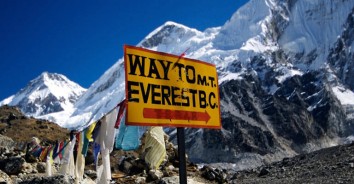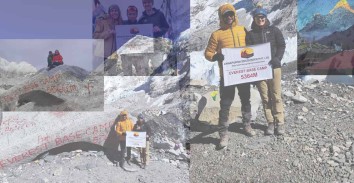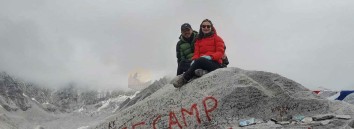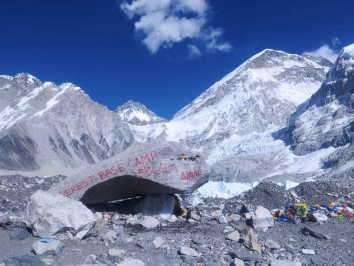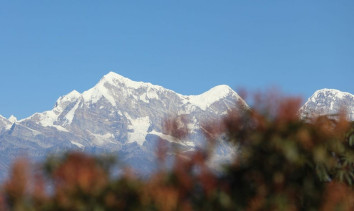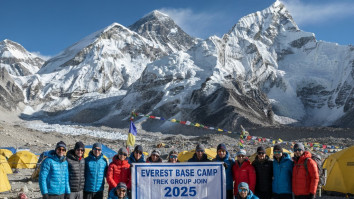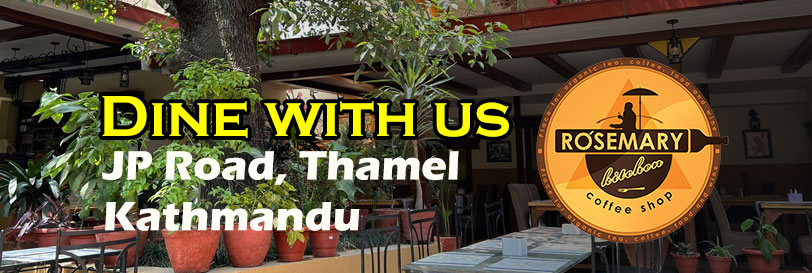Overview And Highlights
TRIP FACTS

" The Traditional Everest Trek ( jiri to Everest Base Camp) traces the path initially taken by the pioneer mountaineers en route to Everest. Jiri (1905) boasts a distinct and pristine setting "
Jiri remains an entry point to Everest Base Camp and actively promotes a clean, eco-friendly environment. They engage in cultivating exotic fruits, including Kiwi Fruit. Additionally, there's a cheese factory producing the traditional Chhurpi or durkha cheese from yak and cow's milk, widely consumed in the Himalayan region. The valley hosts a significant farming community tending terraced fields and an intriguing yak farm worth a visit. It also features a park and memorial honoring Hillary and Sherpa Tenzing, the first Everest climbers (8848m - Sagarmatha). On your journey to the base camp, you might spot rare species like the snow leopard, musk deer, and red panda.
This trek can be quite challenging due to numerous steep ascents and descents. It's also known as the Great Himalaya Cultural Trail and is rich in cultural experiences, with Buddhism as the predominant religion and Lamas serving as spiritual leaders. Along the path, you'll encounter abundant birdlife, forests, and picturesque villages. You'll pass several renowned Buddhist monasteries like Thupten Choling near the Sherpa village of Junbesi (2700m) and Trakshindu.
Highlights of Everest Base Camp
- A classic hike to Everest Base Camp (5,364m) & popular Kalapatthar (5,545m).
- Close peek to culture and lifestyle of both Lower and Upper Khumbu communities.
- Exploration of Sherpa’s traditional villages, cultural houses, religious centers and more – to deeply immerse into their life.
- Encounter of highland wildlife including shy spotted deer, snow leopard, Himalayan Thar and colorful Pheasant (national bird of Nepal which is called Danphe in Nepali Dialect).
- Dramatic view of ancient Khumbu Glacier and dreaded Ice-fall
- Up-close view of world’s highest peaks – Mt. Everest, Mt. Lhotse, Mt. Makalu, Mt. Cho Oyu, Mt. Nuptse, Mt. Ama Dablam and many more.
- Incredible nights at bustling town of Namche Bazaar.
Equipments
The next details will provide you with a basic understanding of what you should carry for the trek. It's crucial not to overlook the necessary items, as they will impact your comfort and safety during the hike. It's just as vital not to weigh yourself down with unnecessary gear during the trek.
- A pair of half-golves
- A pair of Woolen shocks
- A wool jacket or pullover, Water and Windproof shell jackets
- long sleeve t-shirts
- Windproof and Waterproof Trousers (warmer), Comfortable trekking pants
- Waterproof Trekking Boots/ Pair of sandals
- First Aid kits and Medicine
- Backpack with rain cover
- Water Bottle
- Headlamp or torch
- Sunscreen / Sunglasses / Sunhat
- Sleeping bag
- Trekking Poles
- Chapstick
- Camera & Batteries
- Power adapter and chargers
- Travel Towel
- Toiletries
Jiri to Everest Base Camp Trek – Group Size Pricing (per person, USD)
| Group Size | Budget Package | Standard Package | Premium Package |
|---|---|---|---|
| 1 Person (Solo) | $1050 | $1800 | $2,200 |
| 2 People | $1000 | $1750 | $2150 |
| 3–7 People | $950 | $1700 | $2100 |
| 8–12 People | $900 | $1650 | $2000 |
| 13–20 People | $800 | $1550 | $1900 |
Itinerary Expand All Close All
An interesting drive towards east of Kathmandu on Nepal-Tibet/ China Friendship highway for few hours, on reaching at Khalichaur at Bhote Kosi River, leaving the main highway as the drive leads on winding uphill road to Charikot, a nice town of Dolkha distirct with views of Gaurishanker and Melung tse and as far towards Langtang and Everest on east directions.
From this town downhill to Tama Kosi River and climb back to reach at Jiri a nice hill town, regarded as Switzerland of Nepal, due to it beautiful location of hills and valley cooler climate and views of snow-clad peaks.
Food
BLD
Accomodation
Lodge
Elevation
1900
After overnight in Jiri, our first day walk leads past market place and then avoiding the motor road, climbing a hill to reach a high ridge overlooking beautiful views of surrounding landscapes and mountains.
From the ridge top a long downhill walk leads you at Shivalaya village for overnight stop, a nice fair size village with number of lodges for travelers located by the bank of a river.
Food
BLD
Accomodation
Lodge
Elevation
1770
From Shivalaya morning leads to a steep climb to a ridge pat farm villages and terrace fields and then into a cool shade of alpine forest of rhododendron-oaks-pines trees to reach a small pass of Deurali at 2, 715 meters, here with lunch stop a long descend for two hours to Bhandar village for overnight stop, after walking past large Stupa and villages.
Bhandar also called as Chyangma village, the area around of mix tribe of people with Tamang, Newar, but predominantly Sherpa people.
Food
BLD
Accomodation
Lodge
Elevation
2195
Morning starts with downhill through farm areas passing farm villages to reach at Kenja village a nice moderate size village, situated in a warm valley just beneath the high hills of Lamjura and Pikey danda, offering views of Numbur peaks. After Kenja, a steep uphill climb all the way to overnight stop at Sete village from here onwards the temperature gets cooler.
Food
BLD
Accomodation
Lodge
Elevation
2575
Starting with cool morning walk towards Lamjura-la pass with steep climb into forest of rhododendron, pines and oaks trees then through many small farm lands and hamlets, after few hours of climb reaching on top of Lamjura pass marked by a big stupa with few lodges, from the top descend leads through forest all the way to Sherpa village at Toctoc.
After a short stop continue walk on winding path to Junbesi, and then downhill to Junbesi, a lovely large Sherpa village with an interesting monastery and a high school funded by Hillary Trust.
Food
BLD
Accomodation
Lodge
Elevation
2675
After a pleasant stop at Junbesi, morning walk leads to a winding path with glimpse of
Mt. Everest and other snowcapped peaks, and then down towards a river to cross over the bridge, a short climb brings you at a nice Ringmo village, stopping here for lunch after a refreshing stop.
A slow climb into forested areas to reach Takshindu pass above 3,070 m, and then downhill to Nunthala past Takshindu village with its interesting old monastery, descend continues to reach to the bottom of a hill brings at Nuntahla village, also called Manidingma, a mix village of Rai and Sherpa people.
Food
BLD
Accomodation
Lodge
Elevation
2190
From here air gets cooler as our walk leads closer towards Khumbu area, on leaving Solu region, morning begins with downhill into forest to reach a bridge over Dudh Kosi River, after crossing the raging Dudh Kosi River on winding uphill to Jubing village.
After Jubing an hour climb to Kharikhola at 2,200 m high, which is a large village of Sherpa and Magar tribes, after a short break heading up hill after crossing Kharikhola with steep climb for an hour to our overnight stop at Bupsa, a small village perched on a ridge with superb views of rolling hills and valleys.
Food
BLD
Accomodation
Lodge
Elevation
2250
From Bupsa a slow and steady walk reaches high Khumbu area where the temperature gets cooler as the walk continues through mixed alpine forest.
Walk leads over Kharte Dande pass at 3,880m high, way above Dudh Kosi River and then reaching at Puiyan (Paya) village at 2,800 m high a nice place in the midst of forest.
From Puiyan after having lunch leading on a winding trail with views of Lukla town and its airstrip, then descends to Surkhe village for overnight stop in Khumbu area.
Food
BLD
Accomodation
Lodge
Elevation
2295
Morning on pleasant undulating trail close to Lukla reaching at Choplung village where trail from Lukla and Jiri meets, from here to Phakding for overnight stop, as our walk leads past villages and farm lands with grand views of hills and valleys then finally reaching at Phakding village by the Dudh Kosi (river) for overnight stop.
Food
BLD
Accomodation
Lodge
Elevation
2640
Today a long day to reach Namche Bazaar, starting with gradual walk following the river upstream and crossing few bridges to reach at Sagarmatha National Park entrance near Monjo village.
Sagarmatha for Everest in Nepalese and Sherpa calls Chomolungma in both languages means 'Great Mother' from here a pleasant walk on river bed and then climb for few hours into forested trail with views of snow capped peaks, as the walk reaches you at exciting town and village at Namche Bazaar.
Food
BLD
Accomodation
Lodge
Elevation
3440
A rest and free day at Namche Bazaar for proper and necessary acclimatization at this great height of above 3,440 m high before heading higher ground, at Namche spend the day with scenic hike around and browsing the streets and shops, Namche holds a colorful and busy Saturday Market every week.
Food
BLD
Accomodation
Lodge
Elevation
3440
From Namche walk leads on gradual scenic winding path with downhill to Imjatse River to reach at Phunge-Tenga for lunch, afternoon with uphill climb into tall rhododendron, pines, fir forest with grand views of snowcapped peaks.
After few hours of scenic and strenuous climb reaching at Thyangboche Monastery area, here enjoy the marvelous views of Mt. Everest, Nuptse, Lhotse, Kangtenga, Tharmarserku, Kwangde with magnificent Mt. Amadablam, afternoon with time to visit its interesting monastery and observe monks and priest on prayer.
Food
BLD
Accomodation
Lodge
Elevation
3867
Morning walk leads to pleasant downhill for an hour to a bridge, where tree lines stops for short juniper and rhododendron bushes known as azalea facing dramatic change in landscapes.
Heading higher up to the last permanent village at Pangboche, from here onwards are temporary settlement to cater the needs of trekkers at Dingboche, Lobuche and Gorakshep areas.
As trek progress reaching at Somare and then on windswept country to reach a bridge following the Imjatse River, with last climb to enter into beautiful Imjatse valley surrounded with famous peaks Amadablam-Lhotse with views of Island peaks towards east.
The last leg of the day brings you at Dingboche, a summer settlement with barley and buck wheat field within its patch of stone walls to keep the animals off from grazing.
Food
BLD
Accomodation
Lodge
Elevation
4260
Morning start with short climb on top a ridge with Buddhist prayer monuments and then on nice gradual path with slow up as the walk leads with excellent mountain views to reach a small place at Thugla for lunch.
Here Khumbu glacier melts into a raging river, this where path from Pheriche and Dingboche joins after a rest and refreshing stop, walk follows with steep climb for an hour to Thugla pass, where you can find witness memorials of unfortunate climbers who have died climbing on Mt. Everest, Lhotse or other high mountains.
From this isolated spot, walk on gradual path to reach at Lobuche for overnight stop.
Food
BLD
Accomodation
Lodge
Elevation
4930
Today walk leads to our main highlight of the adventure at Everest Base Camp, walk carries on for few hours with short steep climb in between over glacier and moraine, reaching at Gorakshep, beneath lofty peak of Pumori and Kalapathar.
Walk continues towards Everest Base Camp over moraine and ice to reach at base camp, here enjoy the view of tumbling and notorious Khumbu Ice Fall and glaciers.
After a marvelous and exciting time with adventure of a lifetime experience retrace the journey back to Gorakshep for overnight stop.
Food
BLD
Accomodation
Lodge
Elevation
5364
Morning a steep uphill hike to reach on top of Kalapathar at 5,545 meters, highest point of the adventure with fabulous and unique views of mountains includes Mt. Everest at its closest.
After a great thrill with sweeping views descend back to Gorakshep and continue walk up to Thugla, from here on downhill to Pheriche within windy valley.
A nice scenic walk leads you all the way to Pheriche for overnight stop with many good lodges and a health post of HRA (Himalayan Rescue Association).
Food
BLD
Accomodation
Lodge
Elevation
4240
Walk leads with grand views heading to a river on crossing bridge a short climb and then on downhill to Somare and Pangboche villages, after the bridge back into greenery and tree lines towards Thyangboche.
From here retrace the journey on route Namche Bazaar with overnight at Kyanjinma which is few hours ahead from Namche.
Kyanjinma a small scenic place with few good lodges offers grand views of Everest-Amadablam with Thermasharkhu, here chances of seeing some wild life.
Food
BLD
Accomodation
Lodge
Elevation
3560
From this isolated and peaceful spot retrace the journey back to Namche bazaar and on downhill to Dudh Kosi to reach at Sagarmatha entrance and exit gate, and then at Monjo village for overnight after a great walk of the day.
Food
BLD
Accomodation
Lodge
Elevation
2880
Our last day walk of the great adventure, starting on gentle trail crossing a long bridge to reach at Phakding, and then on the way to Lukla with few ups and downhill with last and final climb of an hour to reach at Lukla for last overnight stop in Khumbu and Everest region.
Food
BLD
Accomodation
Lodge
Elevation
2830
Morning as per our flight time transfer to Lukla air terminal and then board in the small plane for exciting half hour flight to reach the hustle and bustle of city life in Kathmandu.
Rest of the day free and relax your body and muscles from great adventure on Jiri to Everest Trekking.
Food
Breakfast
Accomodation
Hotel
Elevation
1350
Services Included on Price
Cost Includes
-
Accommodation
-
Basic tea houses/guesthouses (twin-sharing, simple rooms) throughout the trek
-
-
Transport
-
Local bus from Kathmandu → Jiri
-
Domestic flight Lukla → Kathmandu at the end of trek (regular airline, economy)
-
Local transfers in Kathmandu
-
-
Guide & Porter
-
Licensed English-speaking trekking guide
-
No porter included (can be hired at extra cost)
-
-
Permits & Fees
-
Sagarmatha National Park entry permit
-
Khumbu Pasang Lhamu Rural Municipality permit
-
TIMS card
-
-
Extras
-
Basic first aid kit with the guide
-
Pre-trek briefing
-
Cost Excludes
-
Meals during trek and in Kathmandu
-
Accommodation in Kathmandu before/after trek
-
Porter service (optional at extra cost)
-
Personal trekking gear (sleeping bag, down jacket, poles, etc.)
-
Hot showers, battery charging, Wi-Fi in tea houses (paid locally)
-
Travel insurance (mandatory, covering high altitude & evacuation)
-
International flights & Nepal entry visa fees
-
Alcoholic beverages, bottled water, snacks
-
Tips for guide, driver, and porter
-
Extra costs due to Lukla flight cancellations, weather delays, strikes, or natural disasters
Standard Package Service Excludes
-
Accommodation
-
3★ hotel in Kathmandu (2 nights, breakfast included)
-
Standard tea houses/lodges during trek (twin-sharing)
-
-
Transport
-
Private vehicle Kathmandu → Jiri
-
Domestic flight Lukla → Kathmandu at the end of trek (regular airline)
-
Private airport transfers in Kathmandu
-
-
Meals
-
Breakfast in Kathmandu
-
Three meals a day during trek (breakfast, lunch, dinner with tea/coffee)
-
-
Guide & Porter
-
Experienced licensed trekking guide
-
Porter service (1 porter for 2 trekkers, baggage limit 15–20 kg per porter)
-
-
Permits & Fees
-
Sagarmatha National Park entry permit
-
Khumbu Pasang Lhamu Rural Municipality permit
-
TIMS card
-
-
Extras
-
Airport pick-up & drop-off
-
Medical kit with oxygen oximeter
-
Assistance in case of Lukla flight delays
-
Standard Package Service Excludes
-
Lunch & dinner in Kathmandu (except where mentioned)
-
Personal trekking gear (available on rent in Kathmandu)
-
Hot showers, charging, Wi-Fi during trek (paid locally)
-
Travel insurance (mandatory)
-
International flights & Nepal visa fees
-
Alcoholic beverages, bottled water, snacks
-
Tips for guide, porter, and drivers
-
Extra nights if trek is delayed due to weather/personal reasons
-
Any costs due to unforeseen circumstances (natural disasters, strikes, political unrest, etc.)
Luxury Package Service Includes
-
Accommodation
-
4–5★ hotel in Kathmandu (2 nights, breakfast included)
-
Best available lodges/tea houses during trek (upgraded rooms, attached bathrooms where available)
-
-
Transport
-
Private deluxe vehicle Kathmandu → Jiri
-
Domestic flight Lukla → Kathmandu (option for helicopter return)
-
Luxury airport transfers in Kathmandu
-
-
Meals
-
All meals during trek (wide menu selection)
-
Breakfast in Kathmandu
-
Welcome & farewell cultural dinners in Kathmandu
-
-
Guide & Porter
-
Highly experienced licensed trekking guide with high-altitude expertise
-
Porter service with higher baggage allowance (20–25 kg per porter)
-
Insurance for trekking staff
-
-
Permits & Fees
-
Sagarmatha National Park entry permit
-
Khumbu Pasang Lhamu Rural Municipality permit
-
TIMS card
-
-
Extras
-
Trekking gear on loan (sleeping bag, down jacket, walking poles)
-
Cultural program in Kathmandu
-
Emergency helicopter coordination support (insurance required)
-
Oximeter and daily health monitoring
-
Luxury Package Service Excludes
-
International flights to/from Nepal
-
Nepal entry visa fees
-
Comprehensive travel insurance covering high altitude & helicopter evacuation
-
Personal expenses: souvenirs, laundry, shopping, phone calls, etc.
-
Alcoholic beverages, specialty meals beyond package
-
Tips for guide, porter, and drivers (customary)
-
Optional luxury upgrades (full helicopter return, single-room supplement everywhere)
-
Extra expenses due to Lukla flight cancellations, weather delays, or political disruptions
Jiri to Everest Base Camp Trekking Altitude Profile
FAQs
The Jiri to EBC trek is considered a challenging trek, as it involves walking at high altitudes and over steep and rugged terrain. It's important to be physically fit and mentally prepared for the trek.
It's highly recommended to hire a professional guide and porter for the Jiri to EBC trek, as they will provide valuable assistance, share local knowledge, and ensure your safety during the trek.
The best time to do the Jiri to EBC trek is during the spring (March to May) and autumn (September to November) seasons, when the weather is mild and stable.
The Jiri to EBC trek reaches a maximum altitude of 5,545 meters (18,193 feet) at Kala Patthar.
There are various tea houses and lodges along the Jiri to EBC trek route that provide basic accommodation facilities, including a bed and blankets. Some tea houses may also have hot showers and WiFi access.
The tea houses and lodges along the Jiri to EBC trek route typically offer a variety of Nepalese and Western food options, including dal bhat (rice and lentils), noodles, soups, and curries.
While previous trekking experience is not required, it's important to be physically fit and mentally prepared for the challenges of the trek. It's also recommended to have some experience with high altitude trekking.

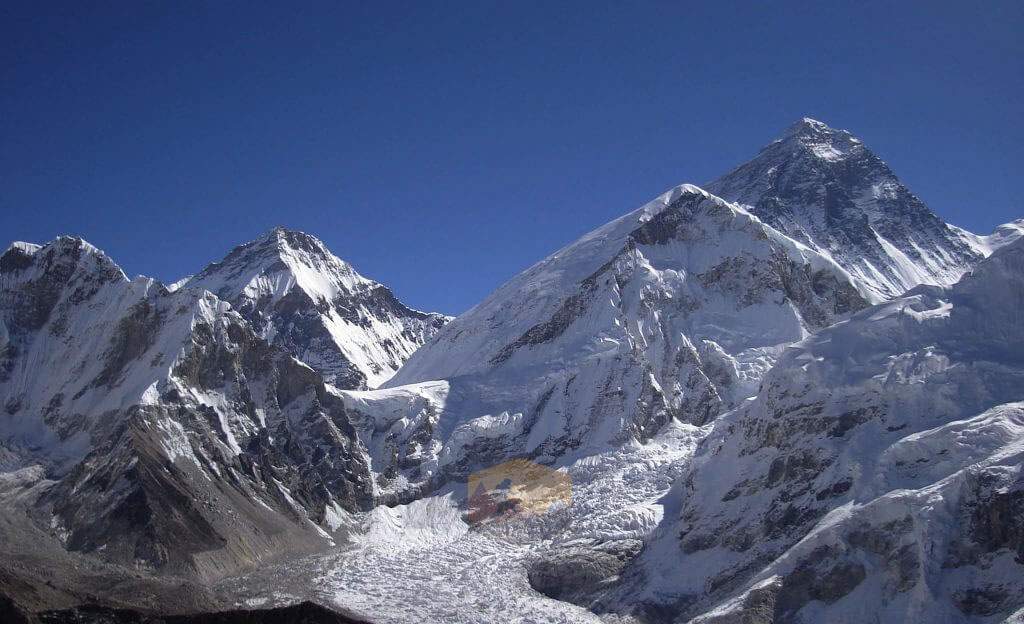
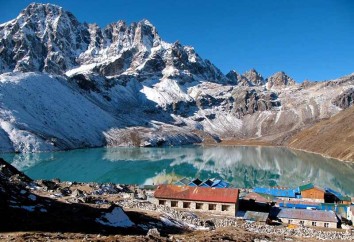

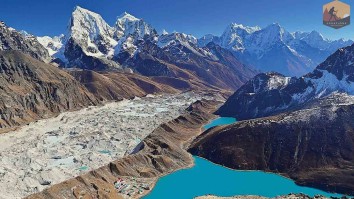
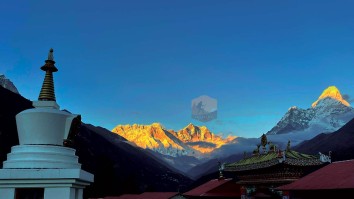
.jpg)
